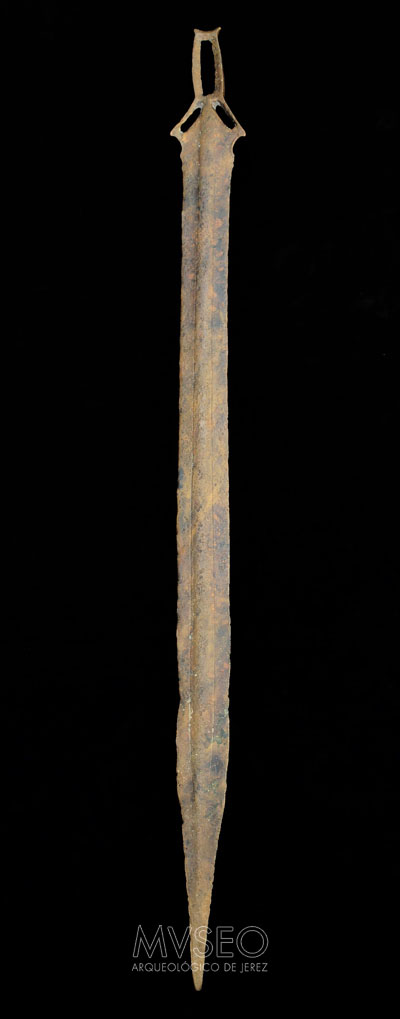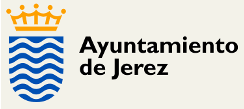LATE BRONZE AGE CARP'S TONGUE SWORD
Protohistory
LATE BRONZE AGE "HUELVA" TYPE SWORD
Bronze.
Total Length: 69.5 cm. Maximum blade width: 3.8 cm. Maximum hilt width: 5.8 cm. Maximum thickness: 0.9 cm.
Protohistory. 10th century B.C.
Origin
La Angostura. Bornos. Cádiz.
Description
Traditionally has been classified as sword “Carp's Tongue” type because of the shape into which it tapers at the tip and it has come dating in the IX century B.C. It has a slightly "pistiliforme" blade, which is 60.8cm in length. The ricassos –that protect the hilt- and nervure are not very pronounced and the three perforations on the tongue reduce it to being the hilt's supportive framework. As with the famous site of bronzes at the Ría de Huelva estuary where many similar swords were found, this piece was discovered in the waters of the Guadalete River. This can therefore be interpreted as a ritual offering. Recent studies considerer it does not belong to the European "Carp's-tongue" swords and it treats itself an Iberian Peninsula southwest workshops production. Likewise they pose as more appropriate chronology the 10th century B.C.
Bibliography
- Meijide Cameselle, G. (1988): Las espadas del Bronce Final en la Península Ibérica. Arqueohistórica nº 1. Universidad de Santiago de Compostela, pp. 32 y 113.
- Ruiz-Gálvez Priego, M. (ed) (1995): Ritos de paso y puntos de paso. La Ría de Huelva en el mundo del Bronce Final Europeo. Complutum. 5. Madrid p.56 y 79.

